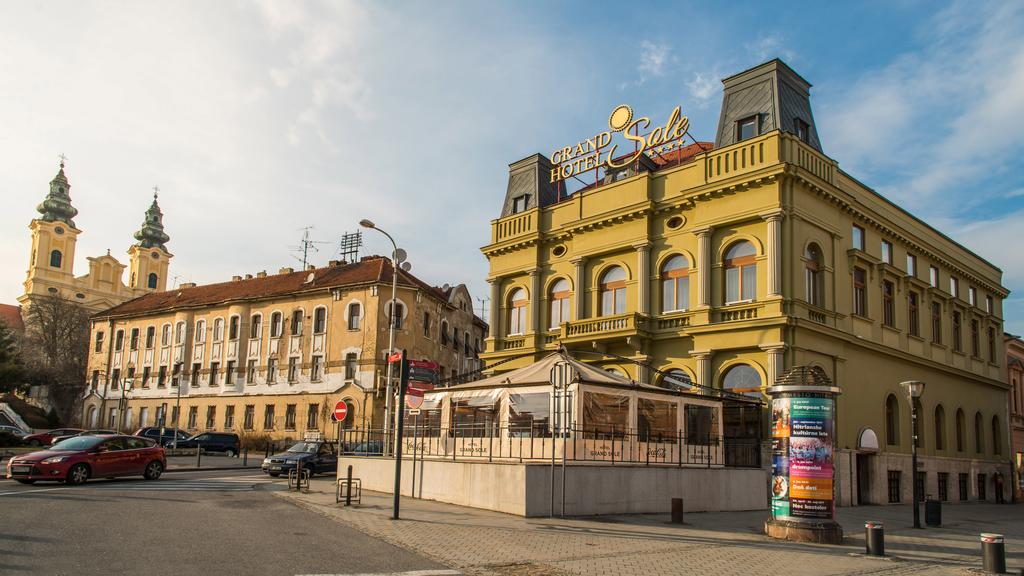Nitra is a city in western Slovakia, situated at the foot of Zobor Mountain in the valley of the river Nitra. With a population of about 78,353, it is the fifth largest city in Slovakia. Nitra is also one of the oldest cities in Slovakia; it was the political center of the Principality of Nitra. Today, it is a seat of a kraj (Nitra Region), and an okres (Nitra District).
Main sights
Points of interest in the area include the Nitra Castle, the old town and the adjacent hill, named Zobor, overlooking the city.
Notable religious structures located in Nitra are St. Emmeram’s Cathedral in Nitra castle, a Piarist church of St. Ladislaus and the adjacent monastery. The oldest church of the city is the Saint Stephen church, which was built in the 11th-12th century, although the foundation of the building was constructed in the 9th century.
The monastery on Piaristicka street was founded in the 13th-14th century. Its dominant church of St. Ladislaus was later destroyed by a fire and remodelled in 1742–1748 in baroque style. Two towers were also added. The main altar has a statue ornamentation which the portraits of Saint Stephen and Ladislaus I of Hungary. The interior was renovated in 1940 and three modern frescos depicting themes from Slovak history of Nitra were created.
The old town (Staré Mesto) is dominated by the castle (Hrad), which is one of the most interesting ancient structures in Slovakia. Archeological finding indicate that a large fortified castle had already stood here at the time of Samo‘s Empire, in the seventh century. Archaeological findings prove the existence of a church from the ninth century beneath the more recent Gothic St. Emmeram’s Cathedral. The construction of the stone castle began during the 9th century during the reign of the Prince of Nitra Svätopluk. The castle currently serves as the seat of one of Roman Catholic bishoprics in Slovakia, which was founded in 880 as the first bishopric of western and eastern Slavs, which continued its existence since then, with the break from the 10th century until around 1110.
The Dražovce church is a remarkable example of the early Romanesque architecture.
The Nitra Synagogue was built in 1908-1911 for the Neolog Jewish community. It was designed by Lipót (Leopold) Baumhorn (1860–1932), the prolific Budapest-based synagogue architect. Located in a narrow lane, the building is an example of Baumhorn’s style. A mélange of Moorish, Byzantine and Art Nouveau elements, it faces the street with a two-tower façade. The sanctuary is a domed hall supported by four pillars that also support the women’s gallery. After more than a decade of restoration by the municipality of Nitra, the building is now used as a center for cultural activities. The women’s gallery houses “The Fate of Slovak Jews” – Slovakia’s national Holocaust memorial exhibition. The Nitra Synagogue serves as a permanent exhibition space for graphic works by the Nitra-born Israeli artist Shraga Weil.
The most powerful medium wave transmitter of Slovakia, running on 1098 kHz, was situated in Nitra at Velke Kostolany until recently. This transmitter could broadcast throughout all of Europe at night. Since 2003, however, it has operated on lower output to save energy cost, and has transmitted regional programming only.
The Virgin Mary’s mission house at the Calvary hill was built in 1765 for Spanish order of Nazarens. They were taking care of the church and pilgrims. Later, the building served as an orphanage. In 1878-85 this building was rebuilt in the Novoromanesque style and in 1925 one new floor was added to the building. The building as we know it today is a work of Slovak architect M. M. Harminec. Nowadays the whole building is mission house of The Divine Word Society. The Mission museum of nations and cultures is located in this building.



